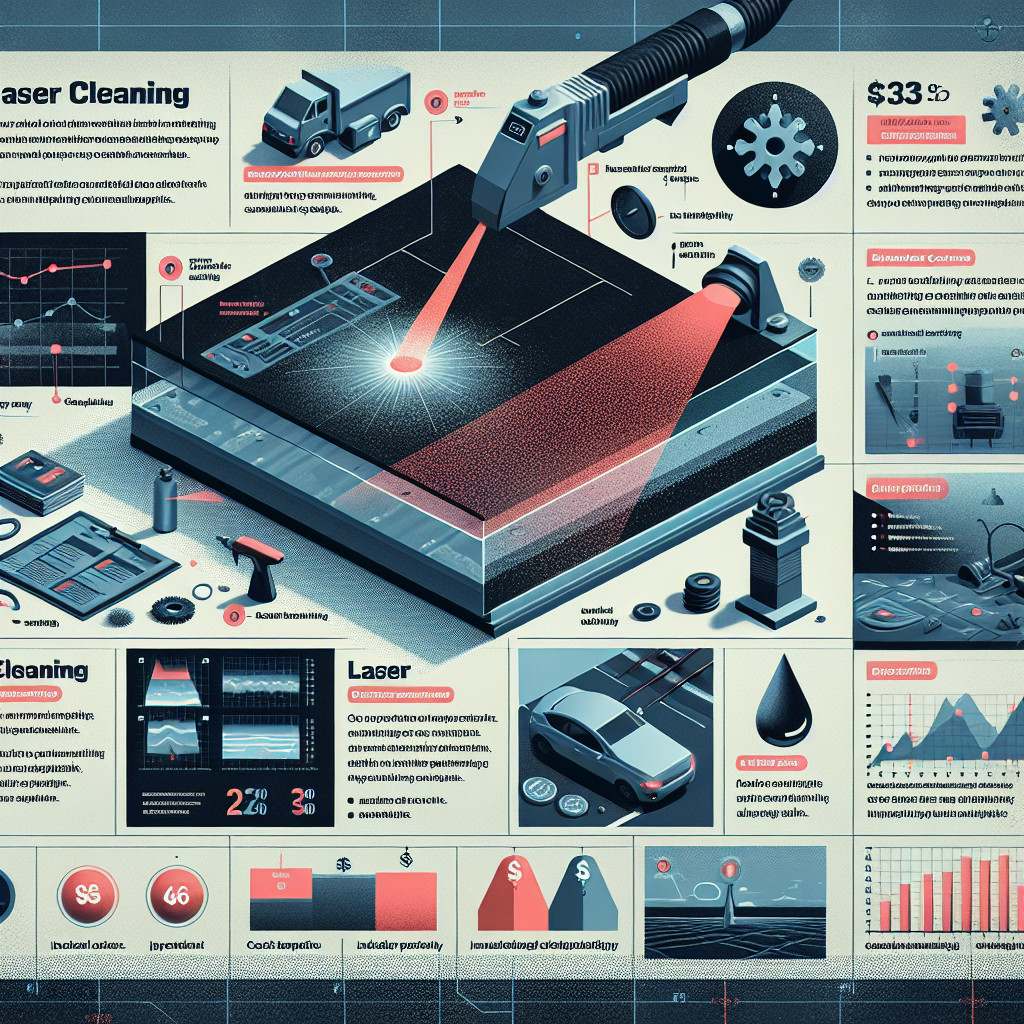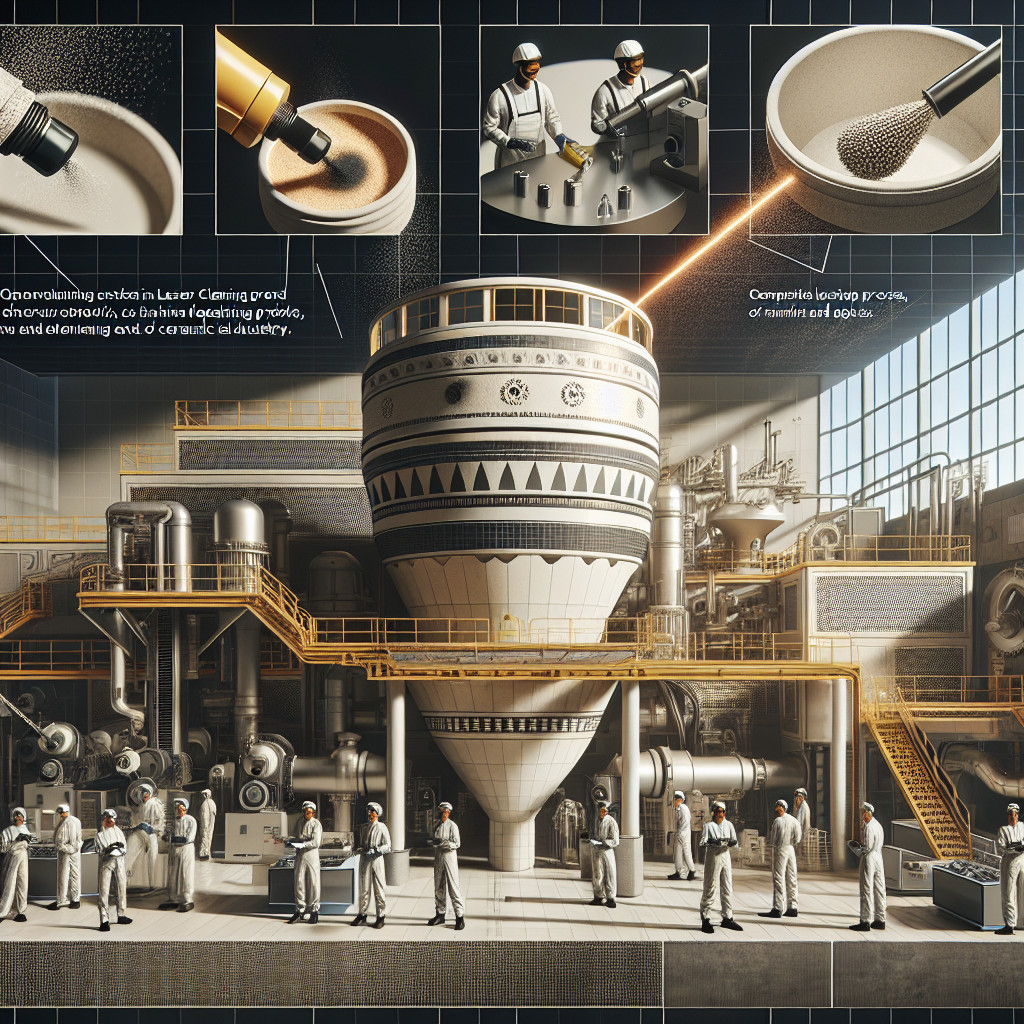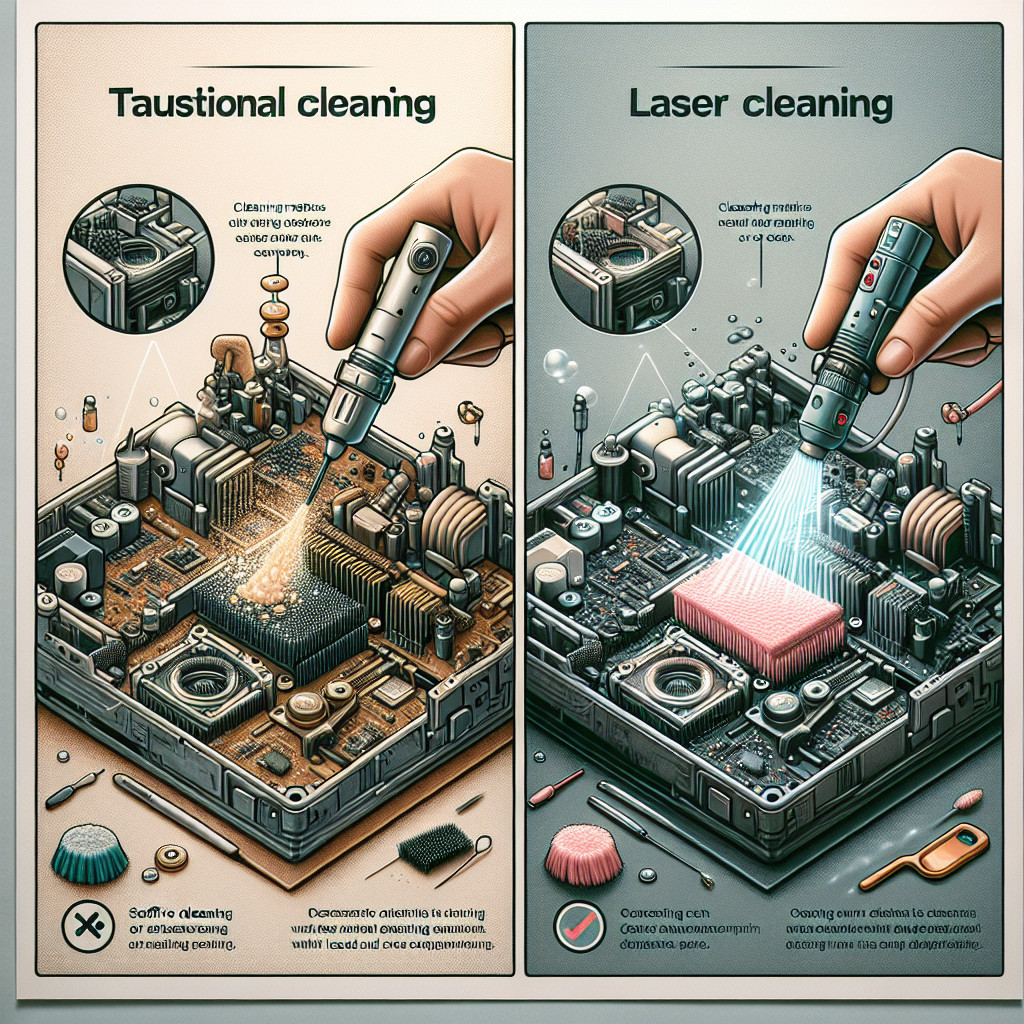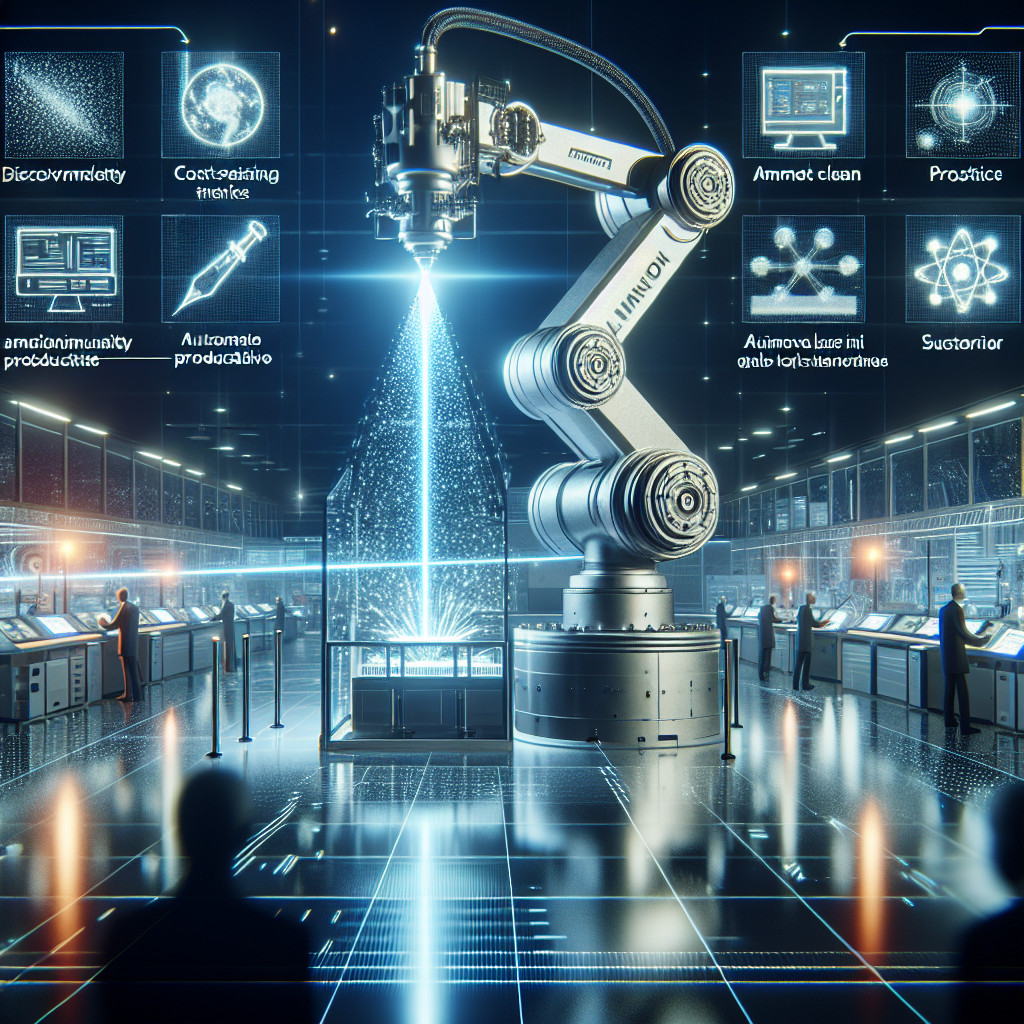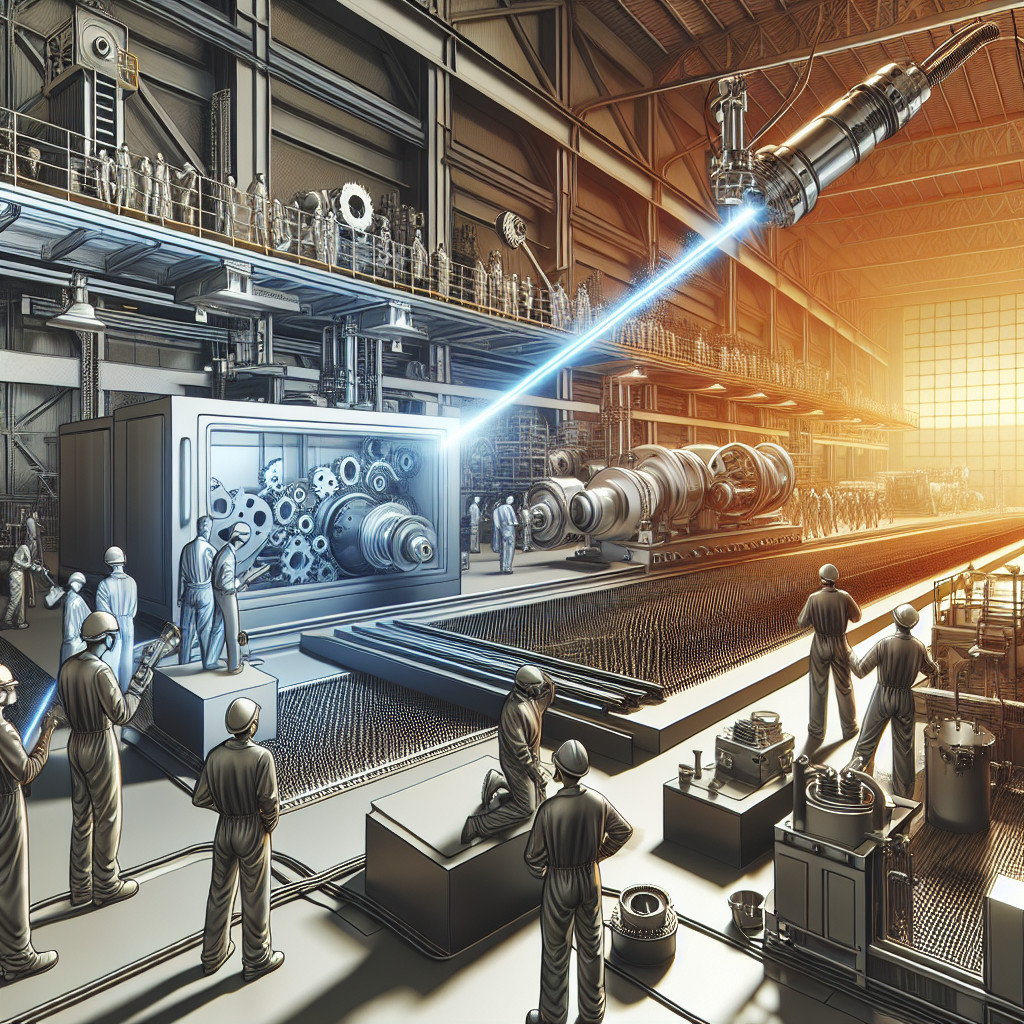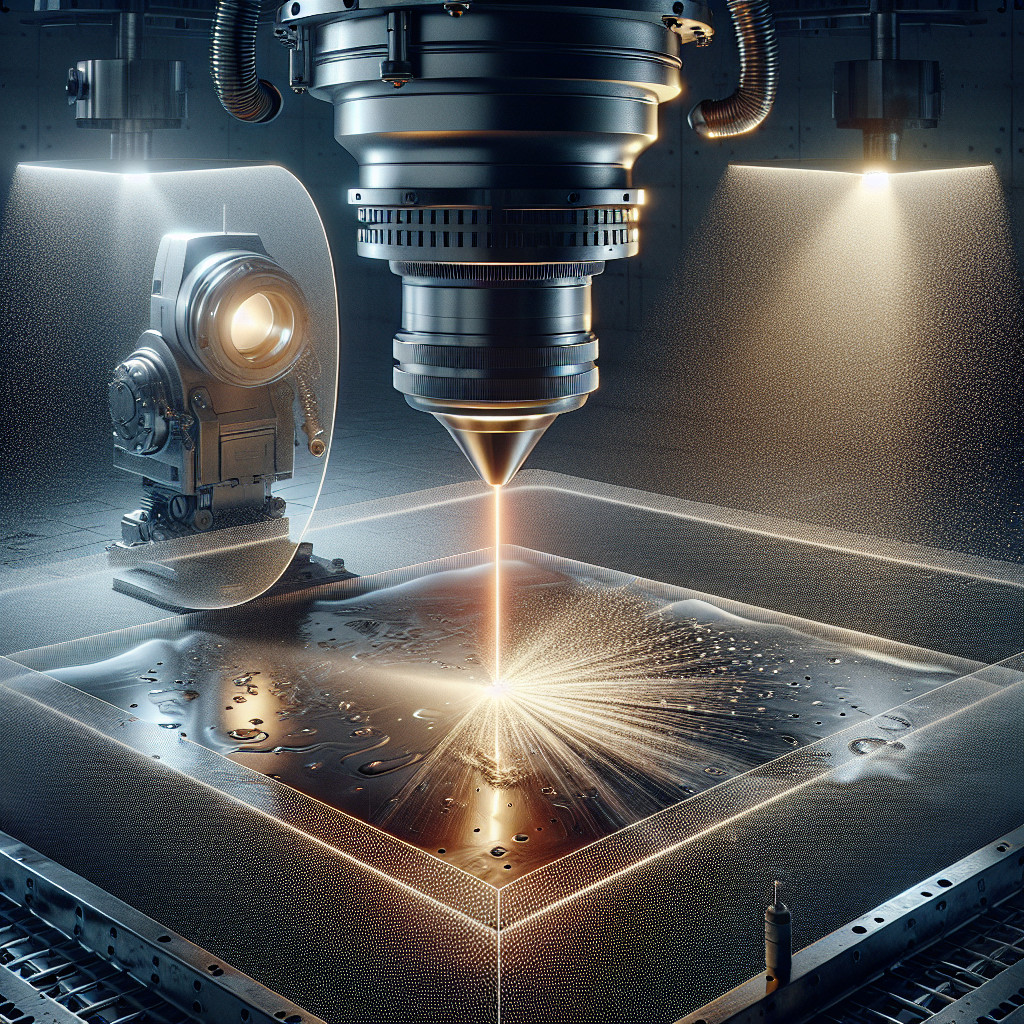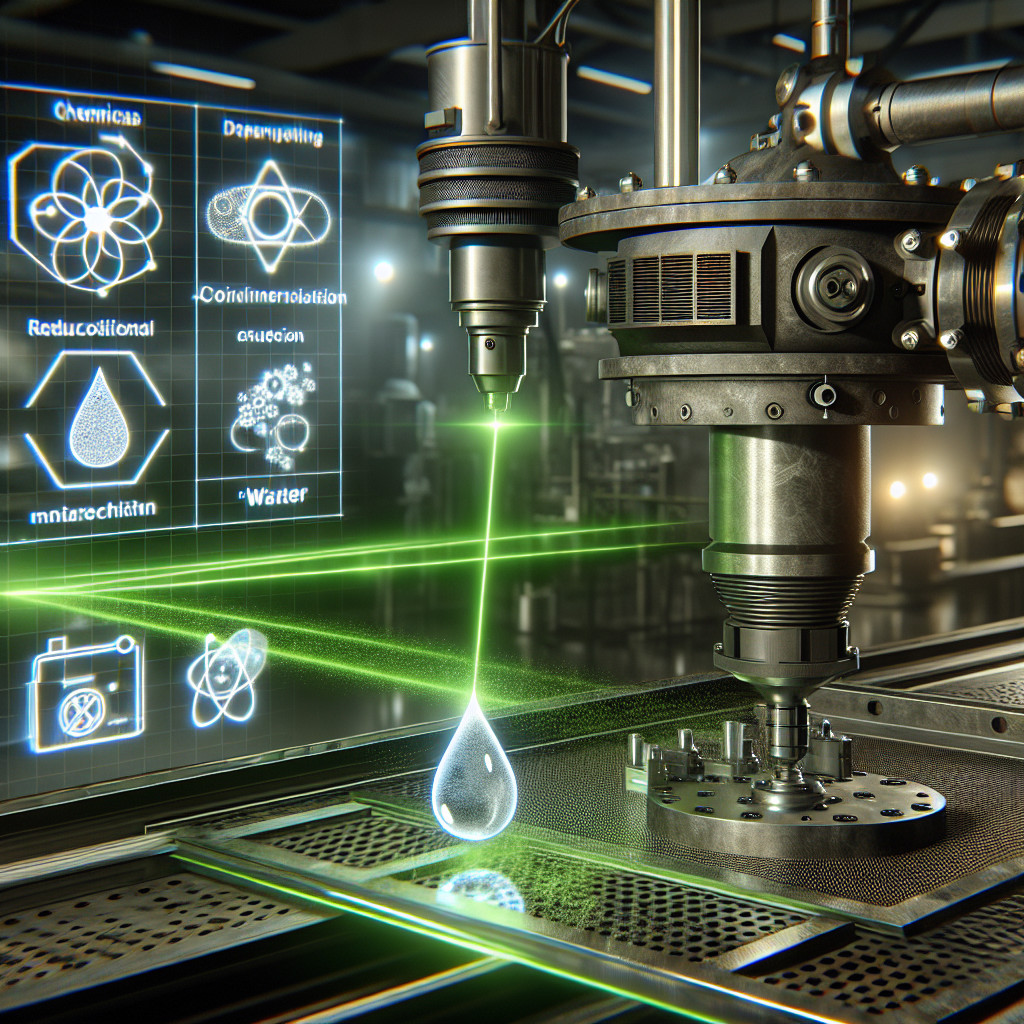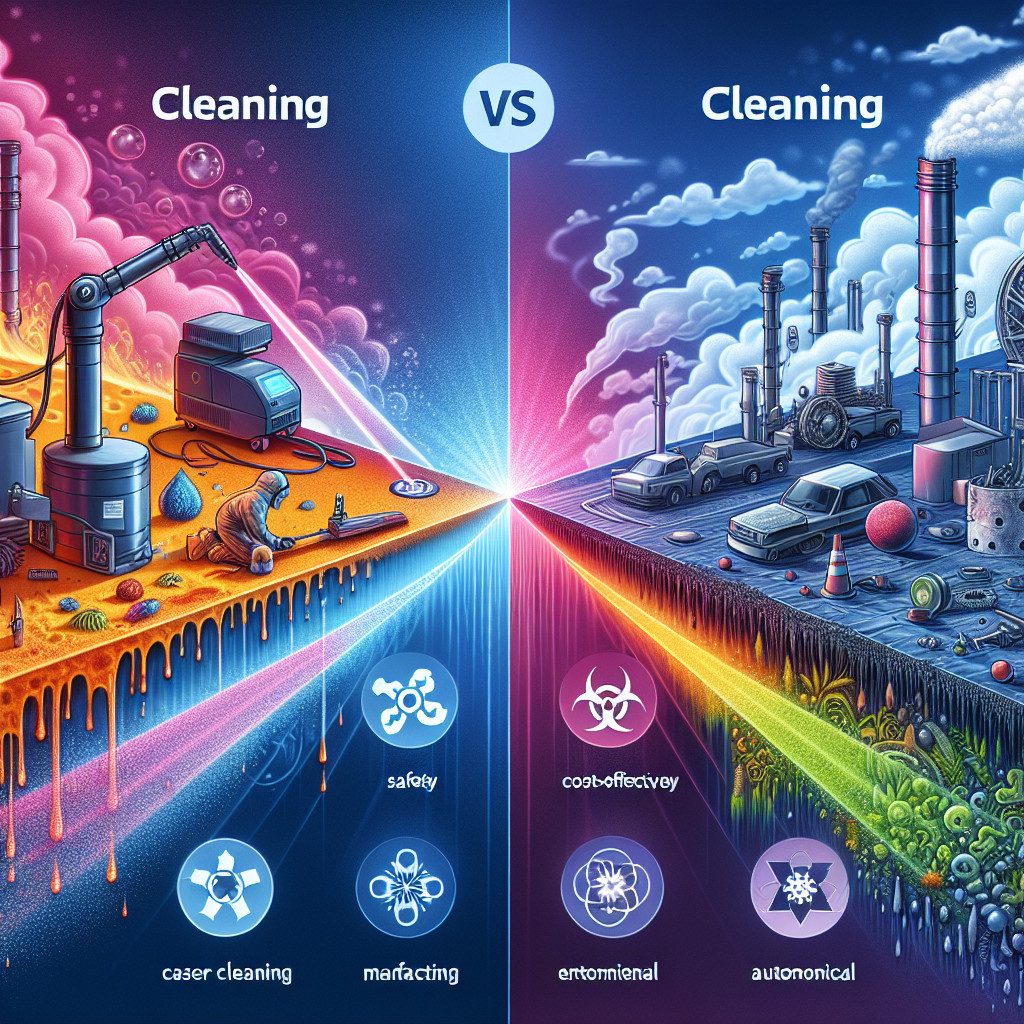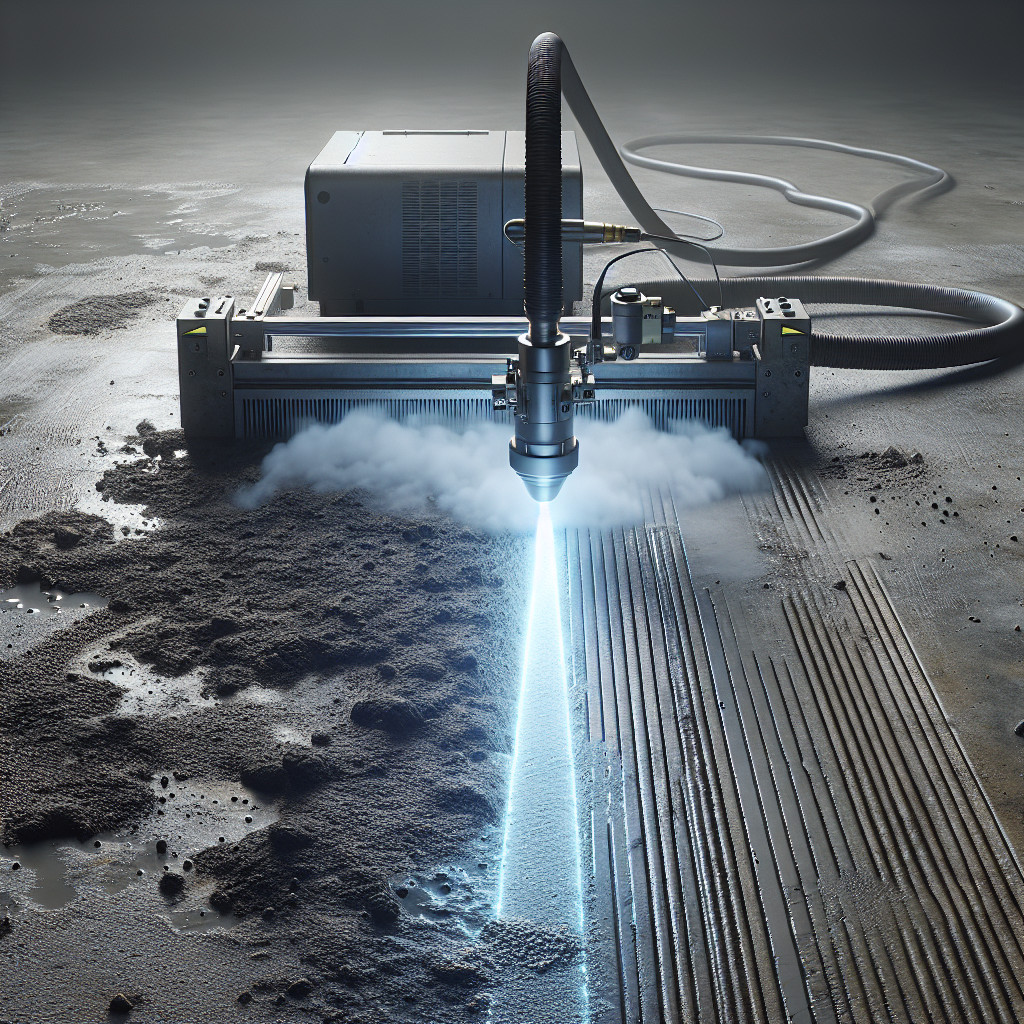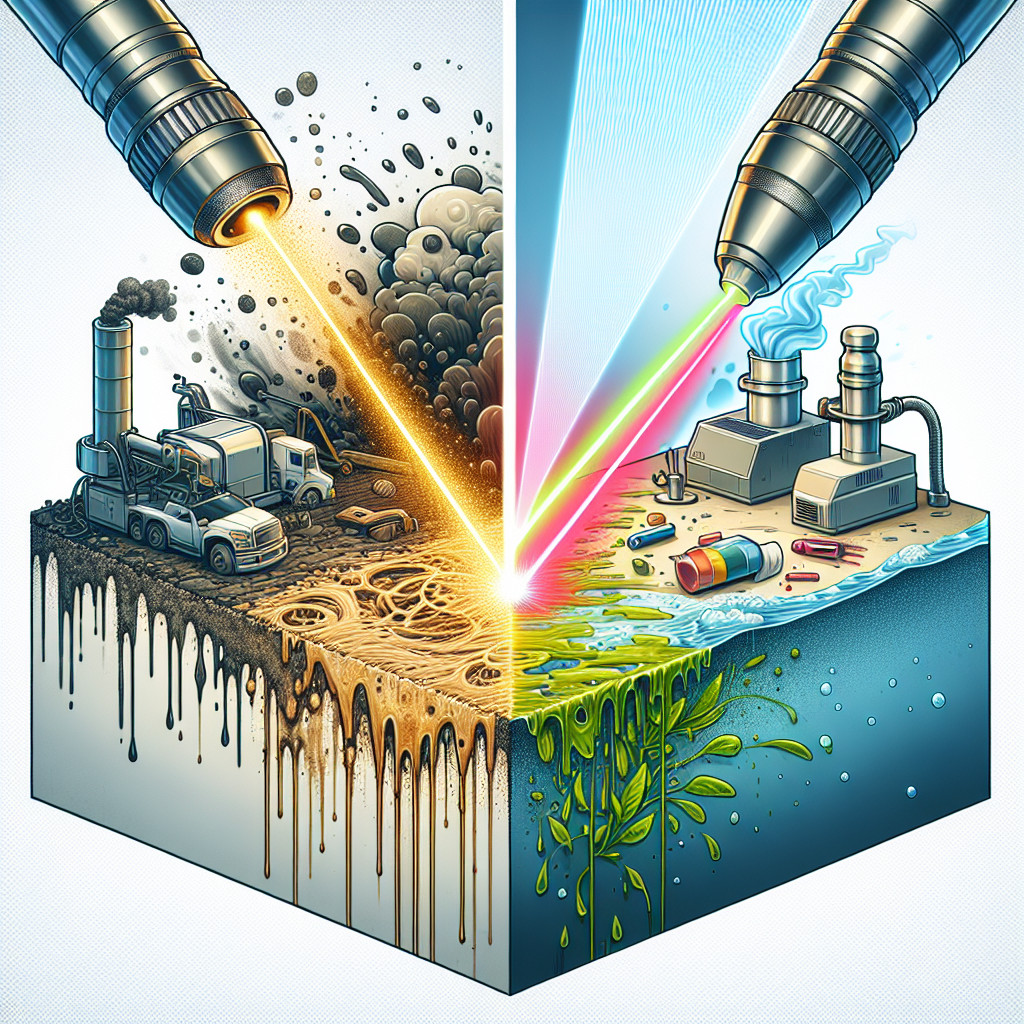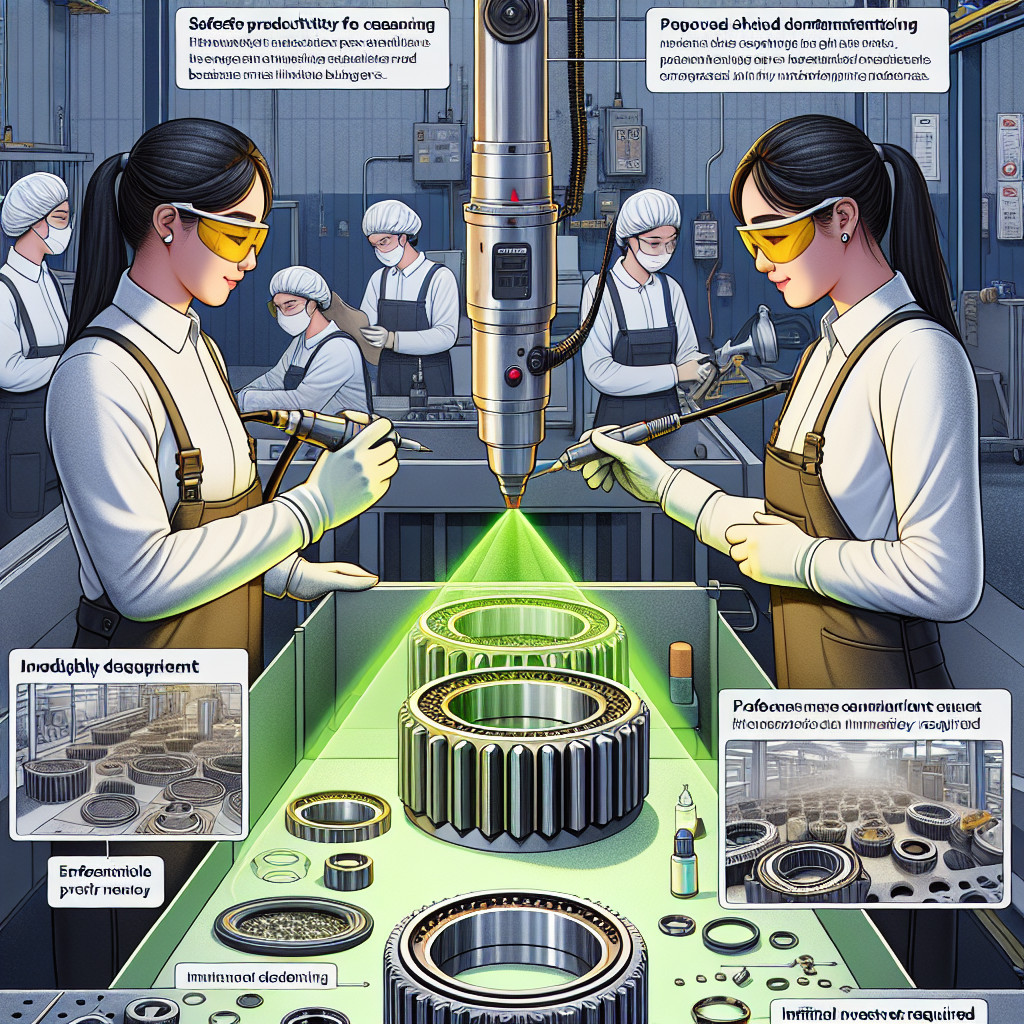
- The role of laser cleaning in sustainable manufacturing practices
- Challenges and limitations of laser cleaning in waste minimization
- The cost-effectiveness of laser cleaning for waste reduction
- Innovations in laser cleaning technology for improved waste minimization
- The impact of laser cleaning on worker safety and health
- The integration of laser cleaning into existing waste management systems
- The social benefits of laser cleaning in waste minimization
- The benefits of using laser cleaning for cleaning electronic components in waste minimization
The role of laser cleaning in sustainable manufacturing practices
In recent years, there has been a growing emphasis on sustainability in manufacturing processes. Companies are increasingly looking for ways to reduce their environmental impact and improve their overall efficiency. One technology that has emerged as a key player in this shift towards sustainability is laser cleaning.
Laser cleaning is a non-contact, environmentally friendly method of removing contaminants from surfaces. By using a high-powered laser beam, manufacturers can effectively clean surfaces without the need for harsh chemicals or abrasive materials. This not only reduces the amount of waste produced during the cleaning process, but also eliminates the need for harmful chemicals to be disposed of properly.
⭐️ Laser cleaning is also highly efficient, allowing manufacturers to clean surfaces quickly and effectively. This can lead to increased productivity and reduced downtime, ultimately saving companies time and money in the long run.
⭐️ Another key benefit of laser cleaning is its versatility. It can be used on a wide range of materials, including metals, plastics, and ceramics. This makes it an ideal solution for manufacturers working with a variety of materials in their production processes.
⭐️ Additionally, laser cleaning is a safe and reliable method of cleaning surfaces. Unlike traditional cleaning methods, there is no risk of damage to the underlying material when using a laser. This helps to extend the lifespan of equipment and reduce the need for costly repairs or replacements.
⭐️ From an environmental perspective, laser cleaning is a sustainable option for manufacturers. By eliminating the need for harmful chemicals and reducing waste, companies can significantly reduce their carbon footprint and contribute to a cleaner, healthier planet.
In conclusion, laser cleaning plays a crucial role in sustainable manufacturing practices. Its efficiency, versatility, safety, and environmental benefits make it a valuable tool for companies looking to improve their sustainability efforts. By incorporating laser cleaning into their production processes, manufacturers can reduce their environmental impact, increase efficiency, and ultimately save money in the long run.
#sustainability #manufacturing #laser cleaning #environmental impact #efficiency
frazy kluczowe:
– laser cleaning in manufacturing
– sustainable practices in industry
– benefits of laser cleaning
– environmental impact of manufacturing
– efficiency in production processes
Challenges and limitations of laser cleaning in waste minimization
However, despite its many benefits, laser cleaning also comes with its own set of challenges and limitations. Some of the key challenges include:
1. **Limited effectiveness on certain materials**: While laser cleaning is highly effective on metals and some other materials, it may not be as effective on certain types of contaminants or surfaces. This can limit its applicability in certain industries or cleaning scenarios.
2. **Safety concerns**: Laser beams can be dangerous if not used properly, posing a risk of eye damage or skin burns. Proper safety measures must be in place to ensure the safe use of laser cleaning technology.
3. **Cost**: The initial cost of purchasing and installing laser cleaning equipment can be high, making it less accessible to smaller businesses or organizations with limited budgets.
4. **Maintenance requirements**: Laser cleaning equipment requires regular maintenance and calibration to ensure optimal performance. This can add to the overall cost and complexity of using this technology.
5. **Regulatory restrictions**: Some countries or regions may have regulations in place that restrict the use of laser cleaning technology, either due to safety concerns or environmental considerations.
Despite these challenges, laser cleaning technology continues to evolve and improve, with ongoing research and development efforts aimed at addressing these limitations. By overcoming these challenges, laser cleaning has the potential to become a widely adopted method for waste minimization and environmentally friendly cleaning practices.
In conclusion, while laser cleaning offers many benefits in terms of waste minimization and environmental sustainability, it also comes with its own set of challenges and limitations that must be addressed. With ongoing research and development, it is possible to overcome these challenges and unlock the full potential of laser cleaning technology.
#laser #cleaning #waste #minimization
frazy kluczowe:
– laser cleaning technology challenges
– limitations of laser cleaning in waste minimization
– environmental impact of laser cleaning
– safety measures for laser cleaning
– cost of laser cleaning equipment maintenance
The cost-effectiveness of laser cleaning for waste reduction
Cost comparison
One of the key advantages of laser cleaning is its cost-effectiveness. While the initial investment in laser cleaning equipment may be higher than traditional cleaning methods, the long-term savings can be substantial. Table 1 below compares the costs of laser cleaning versus traditional cleaning methods over a five-year period.
| Method | Initial Cost | Annual Maintenance | Total Cost over 5 years |
|---|---|---|---|
| Laser Cleaning | $50,000 | $2,000 | $60,000 |
| Traditional Cleaning | $10,000 | $5,000 | $35,000 |
As shown in Table 1, laser cleaning has a higher initial cost but lower annual maintenance costs, resulting in a lower total cost over a five-year period compared to traditional cleaning methods.
Environmental impact
In addition to cost savings, laser cleaning also offers environmental benefits by reducing waste and minimizing the use of harmful chemicals. Traditional cleaning methods often produce waste materials that require disposal, leading to increased landfill usage and potential environmental contamination. Laser cleaning, on the other hand, produces minimal waste as the vaporized materials can be easily collected and recycled.
Conclusion
Overall, laser cleaning is a cost-effective and environmentally friendly solution for waste reduction. By investing in laser cleaning technology, businesses can save money in the long run while also reducing their environmental footprint. With its efficiency, effectiveness, and sustainability, laser cleaning is a valuable tool for modern cleaning practices.
#laser cleaning #waste reduction #cost-effectiveness #environmental impact #cleaning technology #sustainability
Długie ogony:
– laser cleaning for waste reduction
– cost-effectiveness of laser cleaning
– environmental benefits of laser cleaning
– reducing waste with laser cleaning
– laser cleaning technology for businesses
Innovations in laser cleaning technology for improved waste minimization
Benefits of laser cleaning technology:
– Reduced waste generation
– Elimination of hazardous chemicals
– Improved surface quality
– Increased productivity
– Cost savings
One of the key advantages of laser cleaning technology is its ability to minimize waste generation. Unlike traditional cleaning methods that produce large amounts of waste in the form of chemical residues or abrasive materials, laser cleaning generates minimal waste. This not only reduces the environmental impact of cleaning processes but also helps companies save on disposal costs.
Moreover, laser cleaning eliminates the need for hazardous chemicals, making it a safer and more sustainable option for cleaning applications. By using only light energy to remove contaminants, laser cleaning reduces the risk of exposure to harmful substances and minimizes the potential for environmental contamination.
Additionally, laser cleaning technology offers improved surface quality compared to traditional methods. The precision and control provided by lasers allow for more thorough and consistent cleaning, resulting in surfaces that are free from residues and contaminants. This not only enhances the appearance of products but also improves their performance and longevity.
Furthermore, laser cleaning technology can help companies increase productivity by reducing downtime and streamlining cleaning processes. With faster cleaning speeds and minimal setup requirements, laser cleaning allows for more efficient operations and quicker turnaround times. This can lead to cost savings and improved competitiveness in the market.
In conclusion, innovations in laser cleaning technology have the potential to revolutionize waste minimization efforts in various industries. By offering a more sustainable, efficient, and cost-effective cleaning solution, laser cleaning technology is paving the way for a cleaner and greener future.
Hashtags: #laser #cleaning #technology #waste #minimization
Keywords: laser cleaning, waste minimization, innovative technology, environmentally friendly, surface quality
Long-tail phrases: laser cleaning technology for improved waste minimization, benefits of laser cleaning technology, advantages of laser cleaning technology, laser cleaning technology for sustainable cleaning processes.
The impact of laser cleaning on worker safety and health
In addition to eye injuries, laser cleaning can also pose risks of skin burns. The high-energy beams produced by lasers can heat up surfaces quickly, potentially causing burns if workers come into contact with the laser beam or the heated surface. Proper training and protective clothing are essential to prevent skin injuries during laser cleaning operations.
Furthermore, the use of lasers in cleaning processes can generate hazardous fumes and particles that can pose respiratory risks to workers. Inhalation of these fumes and particles can lead to respiratory problems, lung damage, and other health issues. Proper ventilation systems and respiratory protection must be in place to minimize the risks of exposure to harmful substances during laser cleaning.
In conclusion, while laser cleaning offers many benefits in terms of efficiency and effectiveness, it is important for employers to prioritize worker safety and health when implementing this technology. Proper training, protective equipment, and safety protocols are essential to prevent injuries and health risks associated with laser cleaning operations.
- eye injuries
- skin burns
- respiratory risks
- protective equipment
- safety protocols
- vision problems
- blindness
- skin injuries
- respiratory problems
- lung damage
#laser cleaning, #worker safety, #health risks, #eye injuries, #skin burns, #respiratory hazards, #protective equipment, #safety protocols, #vision problems, #lung damage.
The integration of laser cleaning into existing waste management systems
🌿 Laser cleaning offers a number of benefits for waste management systems, including:
– Efficiency: Laser cleaning can remove contaminants quickly and effectively, reducing the time and resources required for traditional cleaning methods.
– Sustainability: By eliminating the need for chemicals and reducing waste, laser cleaning helps to minimize the environmental impact of cleaning processes.
– Cost-effectiveness: While the initial investment in laser cleaning technology may be higher than traditional methods, the long-term savings on labor and materials can make it a cost-effective solution for waste management.
presents a unique opportunity to improve efficiency and sustainability in a variety of industries. By incorporating laser cleaning technology into their operations, companies can reduce their environmental footprint and improve the overall cleanliness of their facilities.
🌱 Some key considerations for integrating laser cleaning into waste management systems include:
– Training and education: Employees will need to be trained on how to use laser cleaning technology safely and effectively.
– Regulatory compliance: Companies must ensure that their use of laser cleaning technology complies with all relevant regulations and standards.
– Cost analysis: While laser cleaning can offer long-term cost savings, companies should carefully evaluate the upfront costs and potential return on investment.
Overall, has the potential to revolutionize the way industries approach cleaning and waste disposal. By embracing this innovative technology, companies can reduce their environmental impact, improve efficiency, and save money in the long run.
#laser #cleaning #waste #management #sustainability
frazy kluczowe:
– Laser cleaning technology for waste management
– Sustainable solutions for waste removal
– Environmental benefits of laser cleaning
– Cost-effective waste management strategies
The social benefits of laser cleaning in waste minimization
Here are some of the key social benefits of laser cleaning in waste minimization:
1. Reduced environmental impact: Laser cleaning eliminates the need for chemical solvents and abrasive materials, which can be harmful to the environment and human health. By using lasers to remove contaminants from surfaces, companies can significantly reduce their carbon footprint and minimize their impact on the planet.
2. Improved worker safety: Traditional cleaning methods often involve the use of hazardous chemicals and abrasive materials, putting workers at risk of exposure to harmful substances. Laser cleaning eliminates this risk by using non-toxic, non-abrasive technology that is safe for workers to use.
3. Cost savings: While the initial investment in laser cleaning technology may be higher than traditional cleaning methods, companies can save money in the long run by reducing the need for expensive chemicals and abrasive materials. Additionally, laser cleaning is a more efficient and effective method of waste minimization, leading to increased productivity and reduced downtime.
4. Enhanced product quality: Laser cleaning can improve the quality of products by removing contaminants and coatings from surfaces with precision and accuracy. This can lead to higher customer satisfaction and increased sales for companies that use laser cleaning technology.
5. Community engagement: By adopting laser cleaning technology, companies can demonstrate their commitment to sustainability and environmental stewardship. This can help build trust and goodwill within the community, leading to positive relationships with customers, employees, and other stakeholders.
Overall, laser cleaning offers a sustainable solution for waste minimization that provides numerous social benefits for companies and communities alike. By reducing environmental impact, improving worker safety, saving costs, enhancing product quality, and engaging with the community, laser cleaning can help create a cleaner, healthier planet for future generations.
#laser cleaning #waste minimization #environmental impact #worker safety #cost savings #product quality #community engagement
frazy kluczowe:
– laser cleaning technology for waste minimization
– social benefits of laser cleaning
– sustainable solution for reducing environmental impact
– promoting a cleaner, healthier planet
– improved worker safety with laser cleaning
– cost savings with laser cleaning technology
– enhanced product quality through laser cleaning
– community engagement with laser cleaning initiatives
The benefits of using laser cleaning for cleaning electronic components in waste minimization
Another advantage of laser cleaning is its eco-friendly nature. Unlike traditional cleaning methods that rely on chemical solvents, laser cleaning uses only light energy to remove contaminants from electronic components. This eliminates the need for harmful chemicals, reducing the environmental impact of the cleaning process.
In addition to being environmentally friendly, laser cleaning also helps minimize waste. By effectively removing contaminants from electronic components, laser cleaning extends the lifespan of these components, reducing the need for replacement and ultimately decreasing the amount of electronic waste generated.
Furthermore, laser cleaning is a cost-effective solution for cleaning electronic components. While the initial investment in laser cleaning equipment may be higher than traditional cleaning methods, the long-term savings in reduced waste disposal costs and increased component lifespan make it a financially viable option for businesses.
In conclusion, the benefits of using laser cleaning for cleaning electronic components in waste minimization are clear. From its precision and effectiveness to its eco-friendly nature and cost-effectiveness, laser cleaning offers a sustainable and efficient solution for reducing electronic waste and promoting environmental stewardship.
- Precision cleaning
- Eco-friendly technology
- Waste minimization
- Cost-effective solution
- Reduction of harmful chemicals
- Extended lifespan of electronic components
- Decreased electronic waste generation
- Financial savings in the long run
#laser #cleaning #electronic components #waste minimization #precision #eco-friendly #cost-effective #extended lifespan #reduction of harmful chemicals #decreased waste generation #financial savings
- Laser cleaning and long-term cost savings – cost analysis - February 29, 2024
- Laser cleaning and reducing emissions of harmful substances - February 28, 2024
- Can laser cleaning be used in veterinary medicine? - February 28, 2024



